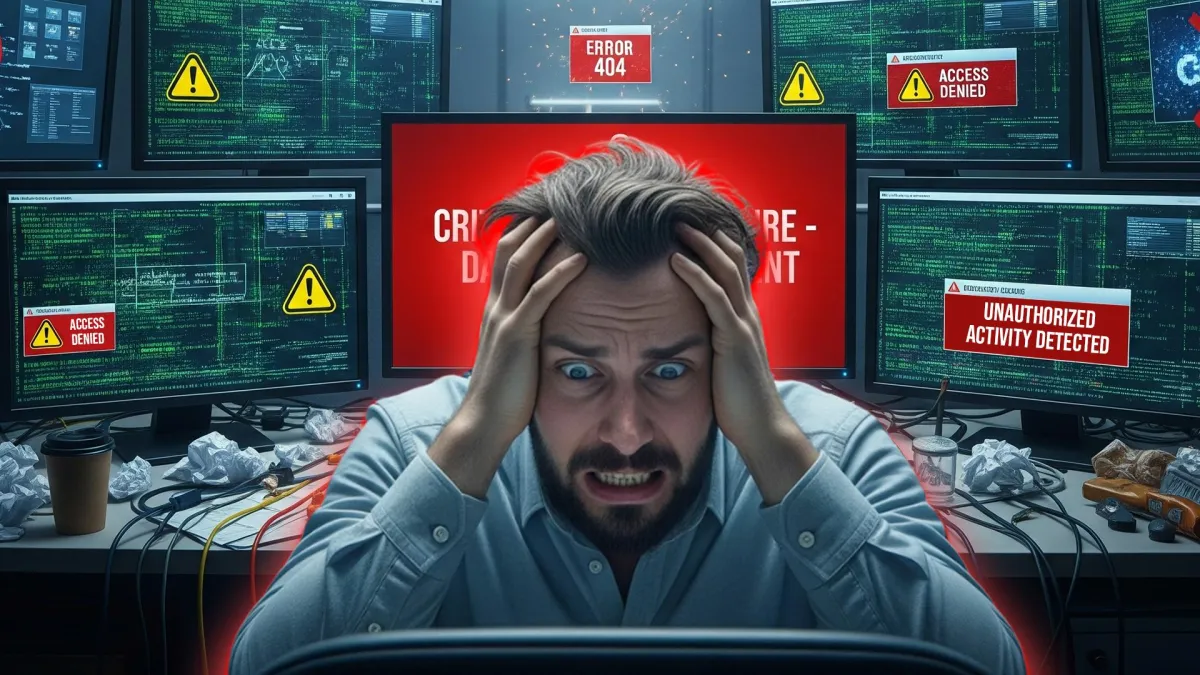
The Most Costly Cybersecurity Failures in History
Cyber disasters rarely start with hackers in hoodies.
They usually begin with something simple: a missed update, a careless click or a small configuration error that no one double-checked.
Then they explode, taking down hospitals, shipping companies and billion-dollar brands.
The difference between a close call and a catastrophe? How well you’re protected before anything happens.
Here are three of the worst real-world cyber failures and how we make sure they never happen to you.
1. The ransomware nightmare
WannaCry didn’t just make headlines. It made history.
This ransomware wave locked people out of their own data and demanded Bitcoin for access. Hospitals couldn’t treat patients. Businesses froze. Governments scrambled.
The cause? Thousands of systems were running unpatched versions of Windows, even though Microsoft had fixed the vulnerability months earlier.
How it could have been stopped:
Update. Your. Systems.
Regular patching and automated updates prevent 99 per cent of known vulnerabilities from being exploited.
What we do differently:
Every system we manage is patched and updated automatically. No one has to “remember.” We also monitor activity in real time, so even if something slips through, it doesn’t get far.
2. The phishing trap
One global shipping company learned the hard way that employees are often the easiest way into a network.
Attackers sent fake emails that looked like they came from trusted partners. People clicked. They entered their credentials. Hackers walked right in.
Without multi-factor authentication (MFA), it was game over. The breach cost millions and shut down operations for weeks.
How it could have been stopped:
Train your team to spot suspicious emails.
Use MFA so stolen passwords aren’t enough to break in.
What we do differently:
We train employees regularly and test them so they’re ready for real-world scams. We also enforce MFA across critical systems so credentials alone won’t open the door.
3. The cloud misconfiguration mess
One social media giant left a massive storage bucket open to the public internet. Anyone with the right link could view sensitive data.
It wasn’t a hack, just a bad setting no one noticed.
How it could have been stopped:
Run regular cloud security audits.
Enforce access controls so only authorized users can handle sensitive data.
What we do differently:
We audit cloud configurations regularly and lock down permissions to prevent exposure. Access is granted on a need-to-know basis and we verify it stays that way.
Your cyber protection checklist
The best time to deal with a cyber threat is before it happens. Here’s what’s non-negotiable:
Regular system updates and patches: no excuses.
Ongoing employee training: people are your first line of defence.
Multi-factor authentication: stop stolen credentials from becoming full-blown breaches.
Cloud security audits: catch mistakes before the bad actors do.
24/7 monitoring: threats don’t clock out at 5 p.m., and neither do we.
Bottom line
Cyber disasters don’t announce themselves. They hit fast, cost big and often start with something that could have been fixed in minutes.
If you’re already a client, you can breathe easy because we’ve got your bases covered.
If you’re not, don’t wait until your name is in the next headline. Let’s lock things down now.

